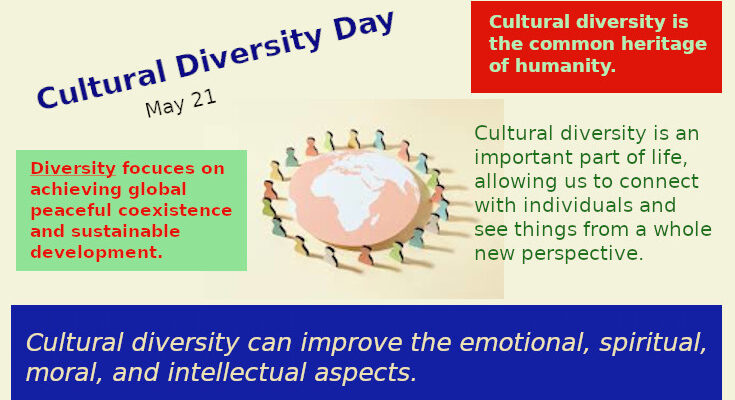With the purpose of uniting global cultures in a way to achieve ongoing prosperity, sustainable development, and global peaceful coexistence, on November 2, 2001, UNESCO adapted the Universal Declaration on Cultural Diversity.
Cultural diversity is the common heritage of humanity, which is embodied in the uniqueness and plurality of identities around the world. On this day, UNESCO wanted to highlight the necessity of diversity in cultures in aiding in the development of global society, strengthening human rights, inspiring creativity, creating solidarity, and building partnerships for the future. The United Nations General Assembly declared Universal Declaration on Cultural Diversity a World Day the next year, in 2002.
After the adoption of the 2030 Agenda for Sustainable Development, the underlying message for this World Day shifted to what it is now. Presently, the World Day for Cultural Diversity for Dialogue and Development (Cultural Diversity Day for short), focuses on uniting global societies, celebrating the richness of each culture, and working towards 17 different sustainable development goals to help ensure the future of all humankind.
Cultural diversity is one of the leading causes of conflict in society. Whether that occurs within one country or across multiple, the results that follow can be catastrophic.
Nevertheless, cultural diversity is an important part of life, allowing us to connect with individuals and see things from a whole new perspective. This has the power to be transformative and beneficial to everyone around the world.
Cultural diversity can improve the emotional, spiritual, moral, and intellectual aspects of an individual’s life and society as a whole. Cultural diversity is also beneficial for economic growth and prosperity, and currently accounts for about 3.1% of the global GDP and 6.2% of all employment.
However, in an effort to generate peace, stability, and development, it’s important that everyone takes a proactive role in bridging the gap between cultures. Otherwise, conflict will continue to overpower cooperation and the true reach of cultural diversity will be difficult to assess.

